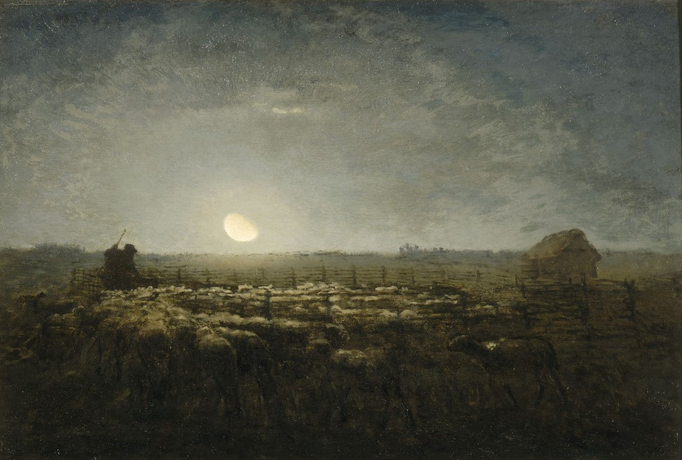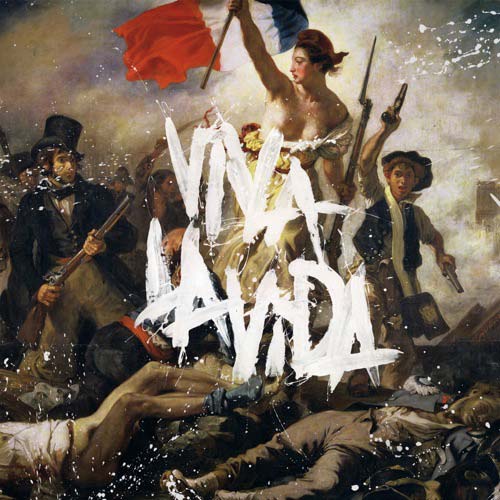The shiny moonlight brightly illuminates the backs of sheep.
Sheep heads are gathering toward the shepherd.
They become one group.
Millet usually portrayed farm villages realistically. However, this piece seems to belong to a more fantastical sort. First of all, the moonlight illuminating the world portrays the farming area like a fantasy world. Sheep illuminated by the moonlight look like clouds. The shepherd portrayed in a silhouette form, next to the moon, looks like a solitary leader.
Although we set aside the fact that this piece conveys Millet’s religious viewpoint, the shepherd, in our conception, is usually a leader who leads sheep in the proper way. The shepherd leads all kinds of sheep – from foolish sheep walking towards the edge of a cliff to reckless sheep trying to escape from the group – safely back home. For sheep that have to go back home, the shepherd is hope itself.
Sheep that know it is hope, thrust away strong temptation, like the scent of a flower at a cliff or curiosity about an unknown place, and obey and follow the directions from the shepherd. Only sheep that have abandoned ‘ego’ can safely return home.
The sheep gathered under the moonlight seem like they are gently obeying. The shepherd is only portrayed in a silhouette but can feel affection for sheep. They have become one through faith and trust; and when the day breaks, next morning, they will go out altogether to the field wet with morning dew. As they have become of one mind, they are happy. Because they are one, they move together; because they are one, they trust each other; and because they are one, they cherish the same hope.





